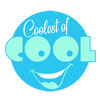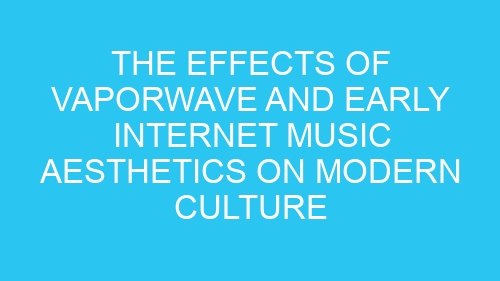-
Table of Contents
Nostalgia and Escapism in Vaporwave Music
Vaporwave music has become a cultural phenomenon in recent years, drawing inspiration from the aesthetics of early internet culture and the nostalgic sounds of the 80s and 90s. This genre of music has a unique ability to transport listeners back in time, evoking feelings of nostalgia and escapism. But what exactly is it about vaporwave that makes it so appealing to modern audiences?
One of the key elements of vaporwave music is its use of samples from popular songs and commercials from the 80s and 90s. These samples are often slowed down, chopped up, and manipulated to create a dreamy, otherworldly sound. This manipulation of familiar sounds creates a sense of disorientation, as if the listener is being transported to a parallel universe where everything is slightly off-kilter.
The nostalgic appeal of vaporwave is undeniable. For many listeners, the music evokes memories of a simpler time, when the internet was still in its infancy and the world seemed full of endless possibilities. The use of retro visuals, such as VHS tapes, neon lights, and pixelated graphics, further enhances this sense of nostalgia, creating a visual aesthetic that is both familiar and alien.
But vaporwave is more than just a trip down memory lane. It also serves as a form of escapism for many listeners, offering a temporary respite from the stresses and anxieties of modern life. The dreamy, ethereal soundscapes of vaporwave create a sense of detachment from reality, allowing listeners to lose themselves in a world of their own making.
In a world that is increasingly fast-paced and interconnected, vaporwave offers a welcome retreat from the chaos of everyday life. Its slow, hypnotic rhythms and hazy atmospheres provide a soothing balm for the soul, allowing listeners to relax and unwind in a way that is both comforting and cathartic.
But vaporwave is not just about nostalgia and escapism. It also serves as a commentary on the nature of consumer culture and the relentless march of technology. The use of samples from commercials and corporate jingles highlights the ways in which capitalism has infiltrated every aspect of our lives, from the products we buy to the music we listen to.
By deconstructing and recontextualizing these familiar sounds, vaporwave challenges listeners to question the values and beliefs that underpin our society. It invites us to think critically about the ways in which we are influenced by advertising and consumerism, and to consider the impact that technology has had on our relationships and sense of self.
In this sense, vaporwave is more than just a genre of music. It is a cultural movement that seeks to provoke thought and spark conversation about the world we live in. By blending elements of nostalgia, escapism, and social commentary, vaporwave has carved out a unique niche in the musical landscape, offering listeners a chance to reflect on the past while imagining a better future.
So the next time you find yourself feeling overwhelmed by the demands of modern life, why not take a trip back in time with vaporwave? Let its dreamy sounds and retro visuals transport you to a world where anything is possible, and where the only limit is your imagination. Who knows, you might just find a new perspective on the world around you.
Influence of Early Internet Aesthetics on Visual Art and Graphic Design
Vaporwave and early internet music aesthetics have had a profound impact on modern culture, influencing everything from fashion to visual art and graphic design. The nostalgic, retro-futuristic vibe of these genres has captured the imagination of a new generation, leading to a resurgence of interest in all things 90s and early 2000s.
One of the most noticeable effects of vaporwave and early internet music aesthetics can be seen in the world of visual art and graphic design. Artists and designers have embraced the glitchy, lo-fi aesthetic of these genres, incorporating elements like pixelated graphics, neon colors, and distorted images into their work. This fusion of old and new creates a sense of nostalgia for a time when the internet was still a mysterious and exciting place.
The influence of early internet aesthetics can be seen in everything from album covers to advertising campaigns. Brands like Nike and Adidas have tapped into the retro-futuristic vibe of vaporwave and early internet music, using bold colors and geometric shapes to create eye-catching designs that appeal to a younger audience. Even mainstream artists like Taylor Swift and Kanye West have incorporated elements of these genres into their music videos and album artwork, further cementing their place in popular culture.
But it’s not just big brands and celebrities who are embracing the aesthetic of vaporwave and early internet music. Independent artists and designers are also getting in on the action, creating their own unique interpretations of these genres. From DIY zines to underground music festivals, the influence of early internet aesthetics can be seen everywhere you look.
One of the reasons why vaporwave and early internet music aesthetics have become so popular is their ability to evoke a sense of nostalgia for a time that many people remember fondly. The internet of the 90s and early 2000s was a wild and untamed place, full of strange websites, dial-up connections, and endless possibilities. By tapping into this nostalgia, artists and designers are able to create work that resonates with a wide audience, drawing them in with its familiar yet otherworldly vibe.
Of course, not everyone is a fan of the vaporwave and early internet music aesthetic. Some critics argue that it is little more than a shallow nostalgia trip, devoid of any real substance or meaning. But for those who grew up in the era of dial-up internet and AOL chat rooms, these genres hold a special place in their hearts, reminding them of a time when the world was full of possibilities and the future seemed limitless.
In conclusion, the influence of vaporwave and early internet music aesthetics on modern culture cannot be overstated. From visual art to graphic design, these genres have left an indelible mark on the creative landscape, inspiring a new generation of artists and designers to embrace the retro-futuristic vibe of the 90s and early 2000s. Love it or hate it, there’s no denying that vaporwave and early internet music have changed the way we think about art and design in the digital age.
Vaporwave’s Impact on Fashion and Consumer Trends
Vaporwave, a genre of music that emerged in the early 2010s, has had a significant impact on modern culture, particularly in the realms of fashion and consumer trends. With its nostalgic nods to the aesthetics of early internet culture and 80s and 90s consumerism, vaporwave has inspired a wave of creativity and innovation in these areas.
One of the most noticeable effects of vaporwave on fashion is the resurgence of retro styles and aesthetics. From oversized graphic tees and neon colors to geometric patterns and futuristic designs, vaporwave has brought back the bold and eclectic looks of the past. Brands like Vans, Adidas, and Supreme have all embraced the vaporwave aesthetic, incorporating elements of it into their collections.
In addition to influencing mainstream fashion, vaporwave has also sparked a DIY movement among independent designers and artists. Many creatives have taken inspiration from the genre’s surreal and dreamlike visuals, creating their own clothing lines and accessories that capture the essence of vaporwave. This DIY ethos has led to a proliferation of unique and innovative designs that challenge traditional notions of fashion.
The influence of vaporwave can also be seen in consumer trends, particularly in the realm of technology and digital media. The genre’s emphasis on nostalgia and retro aesthetics has led to a resurgence of interest in outdated technologies like VHS tapes, cassette tapes, and floppy disks. This trend has manifested in the form of retro-inspired gadgets and accessories, as well as a renewed interest in analog media formats.
Furthermore, vaporwave’s focus on consumer culture and commercialism has prompted a reevaluation of our relationship with technology and consumerism. The genre’s critique of capitalism and mass production has inspired a more conscious approach to consumption, with many consumers opting for sustainable and ethically sourced products. This shift towards mindful consumerism reflects vaporwave’s emphasis on authenticity and individuality.
Overall, vaporwave’s impact on fashion and consumer trends has been profound, reshaping the way we think about aesthetics and consumer culture. By embracing the nostalgia of the past and challenging traditional notions of style and consumption, vaporwave has inspired a new wave of creativity and innovation in these areas. Whether you’re rocking a retro-inspired outfit or browsing the latest tech gadgets, it’s clear that vaporwave has left its mark on modern culture in more ways than one.

